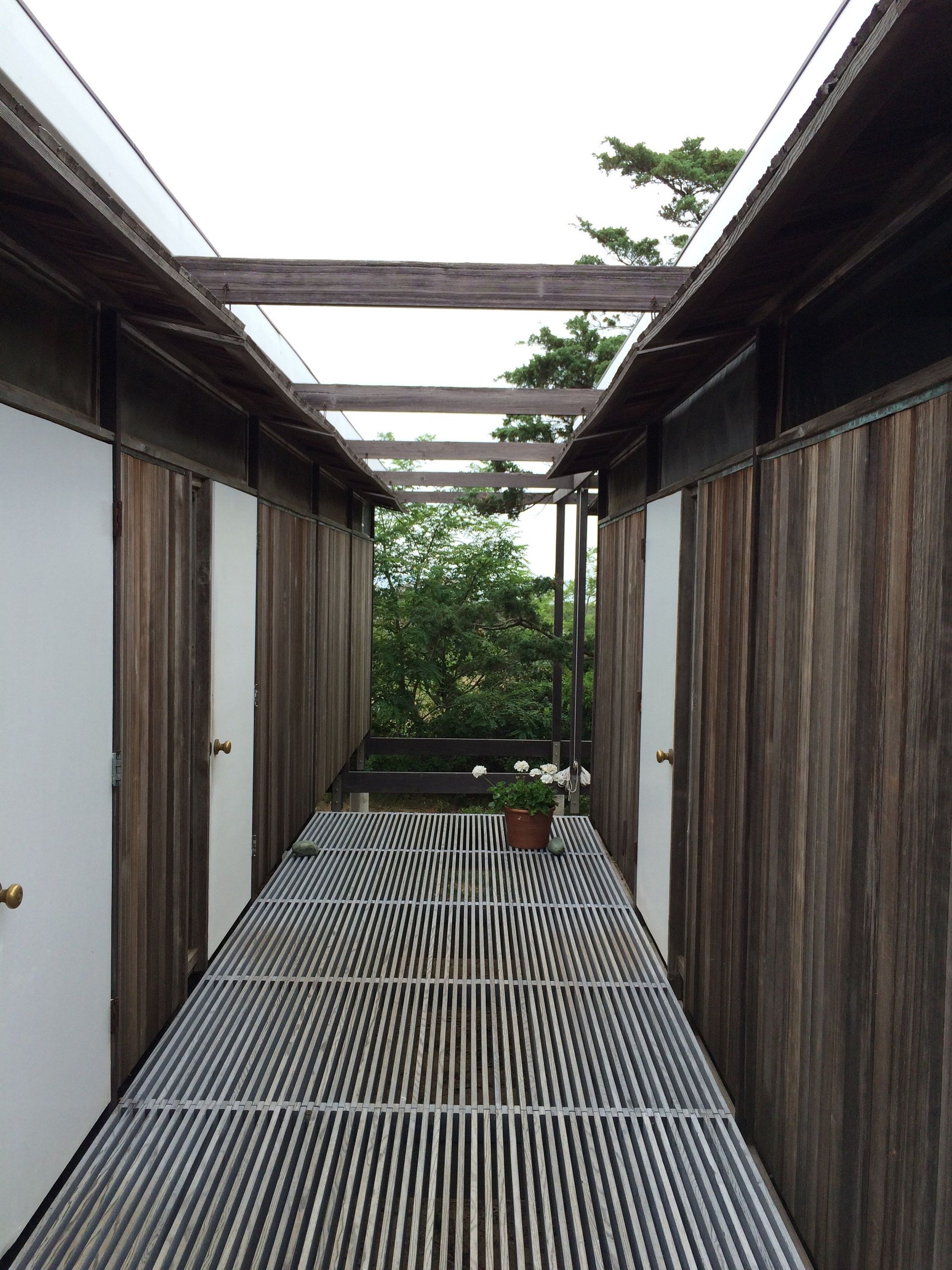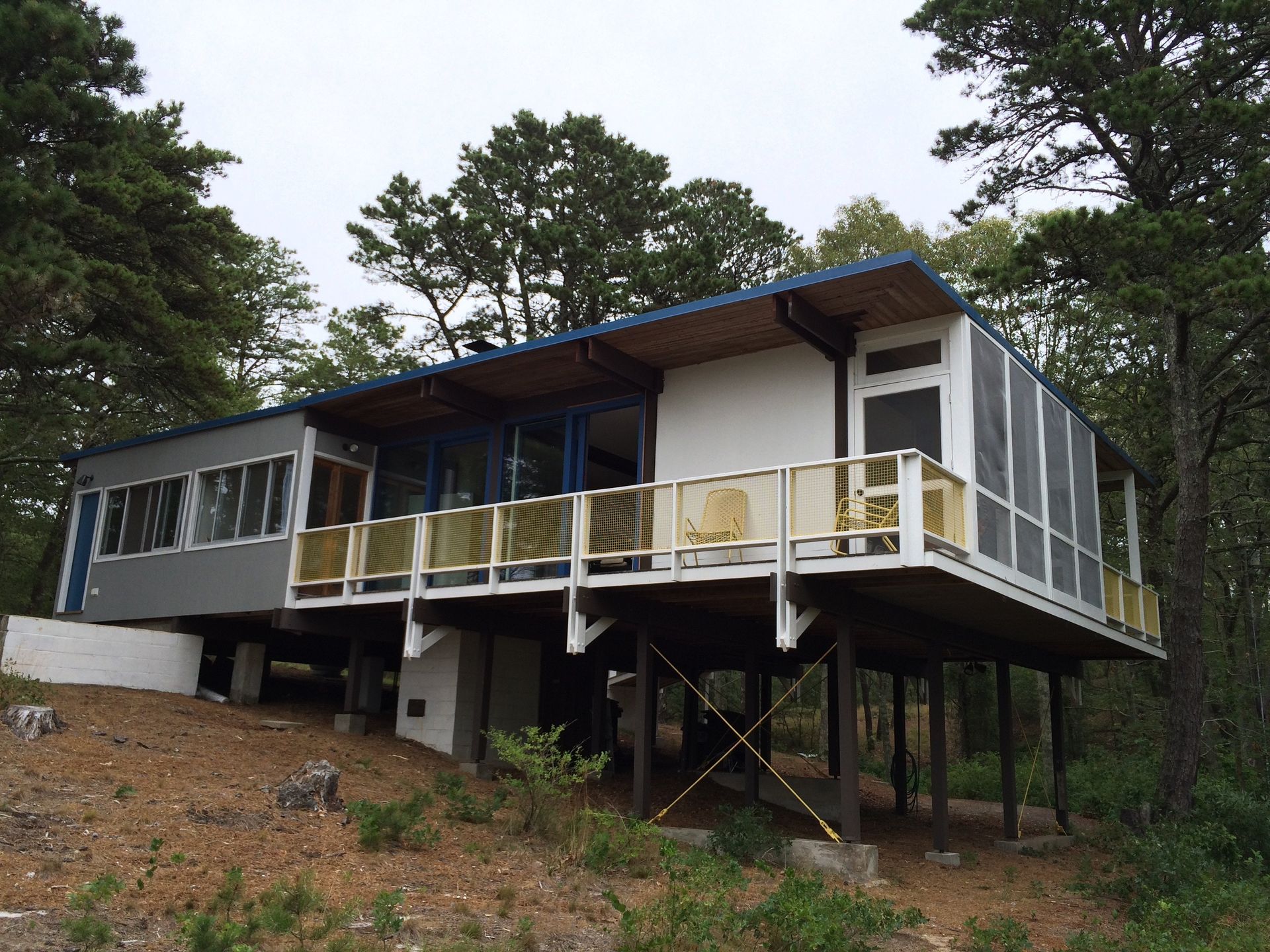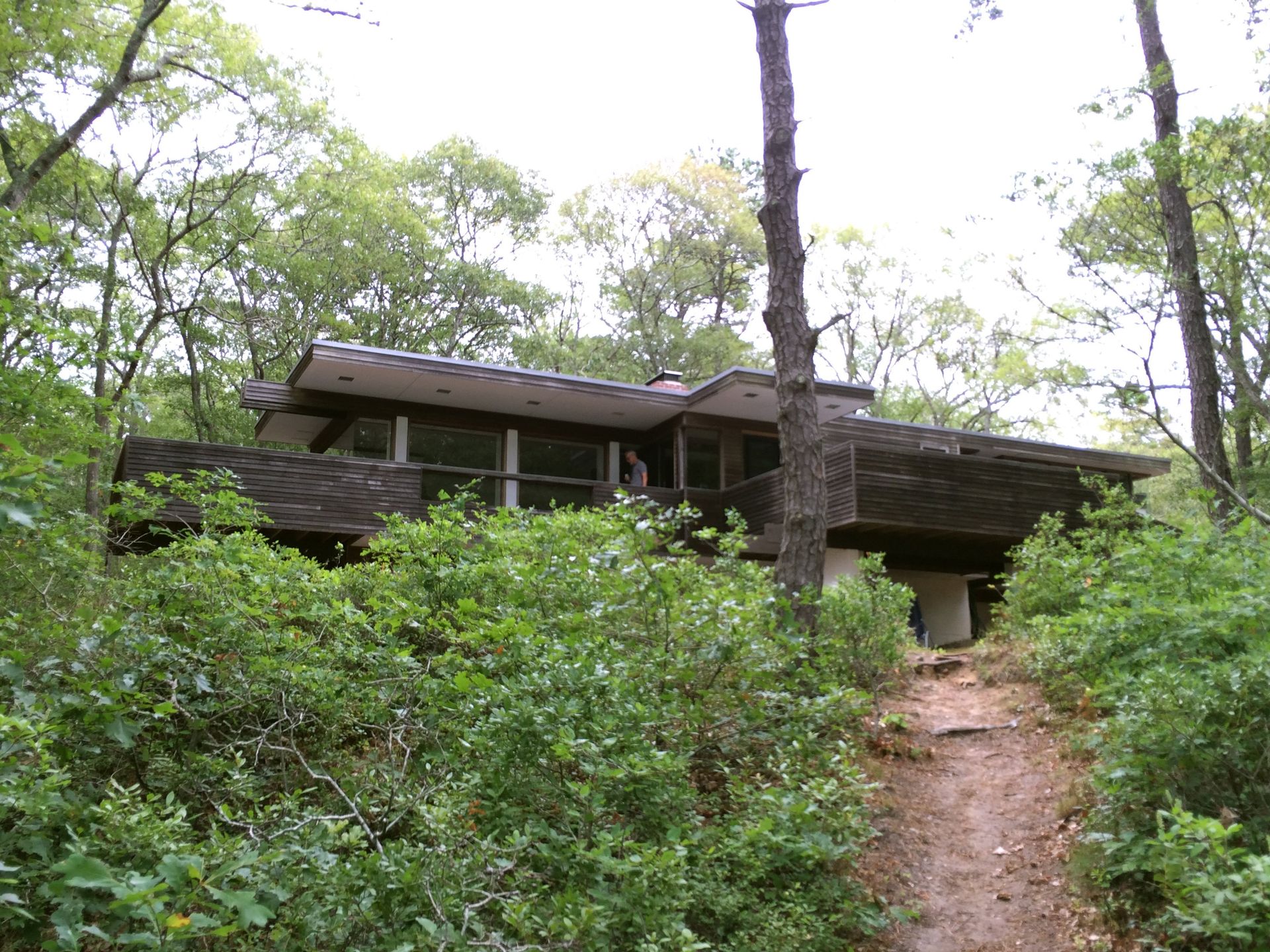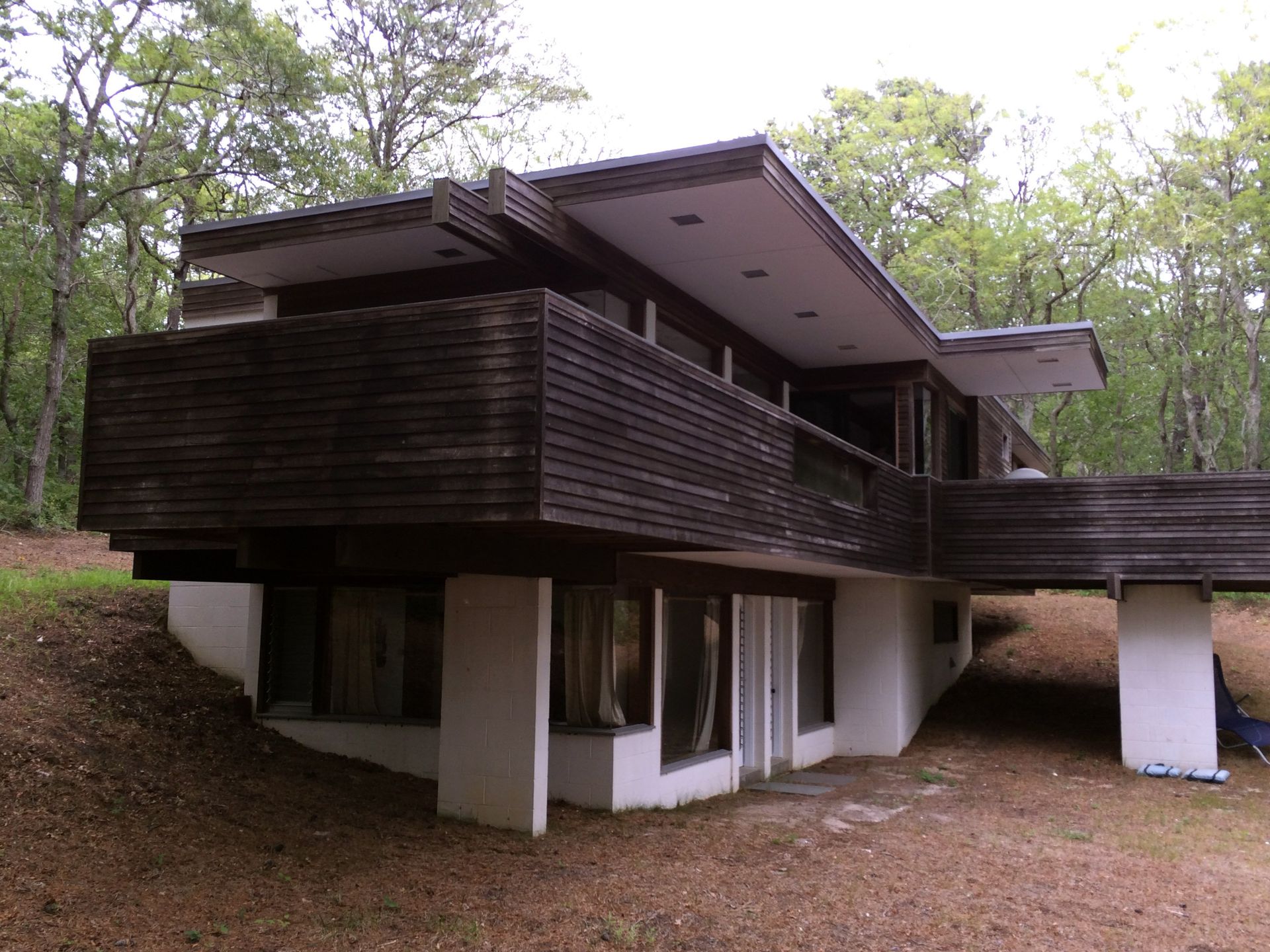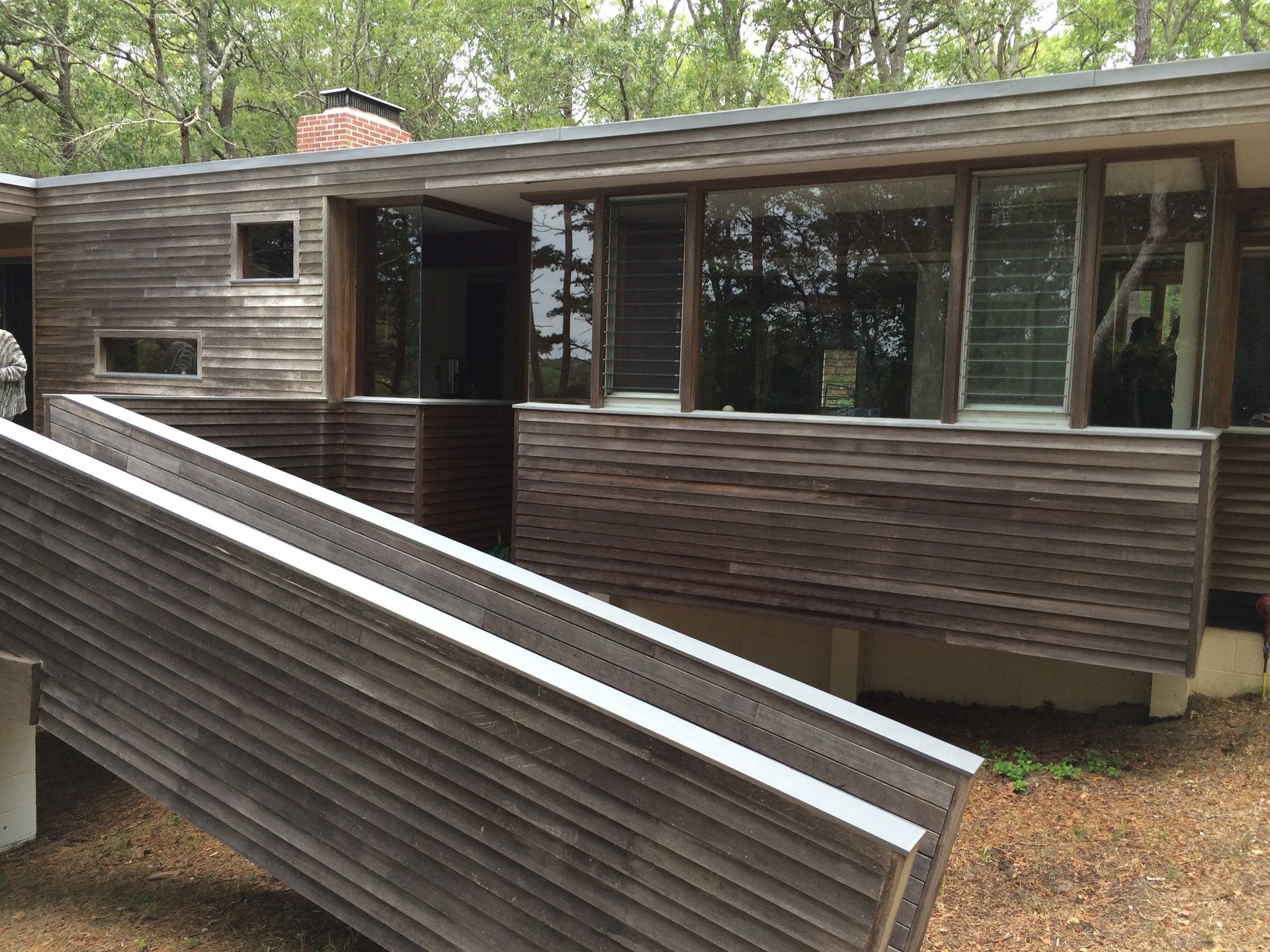Vacation Homes in the Woods
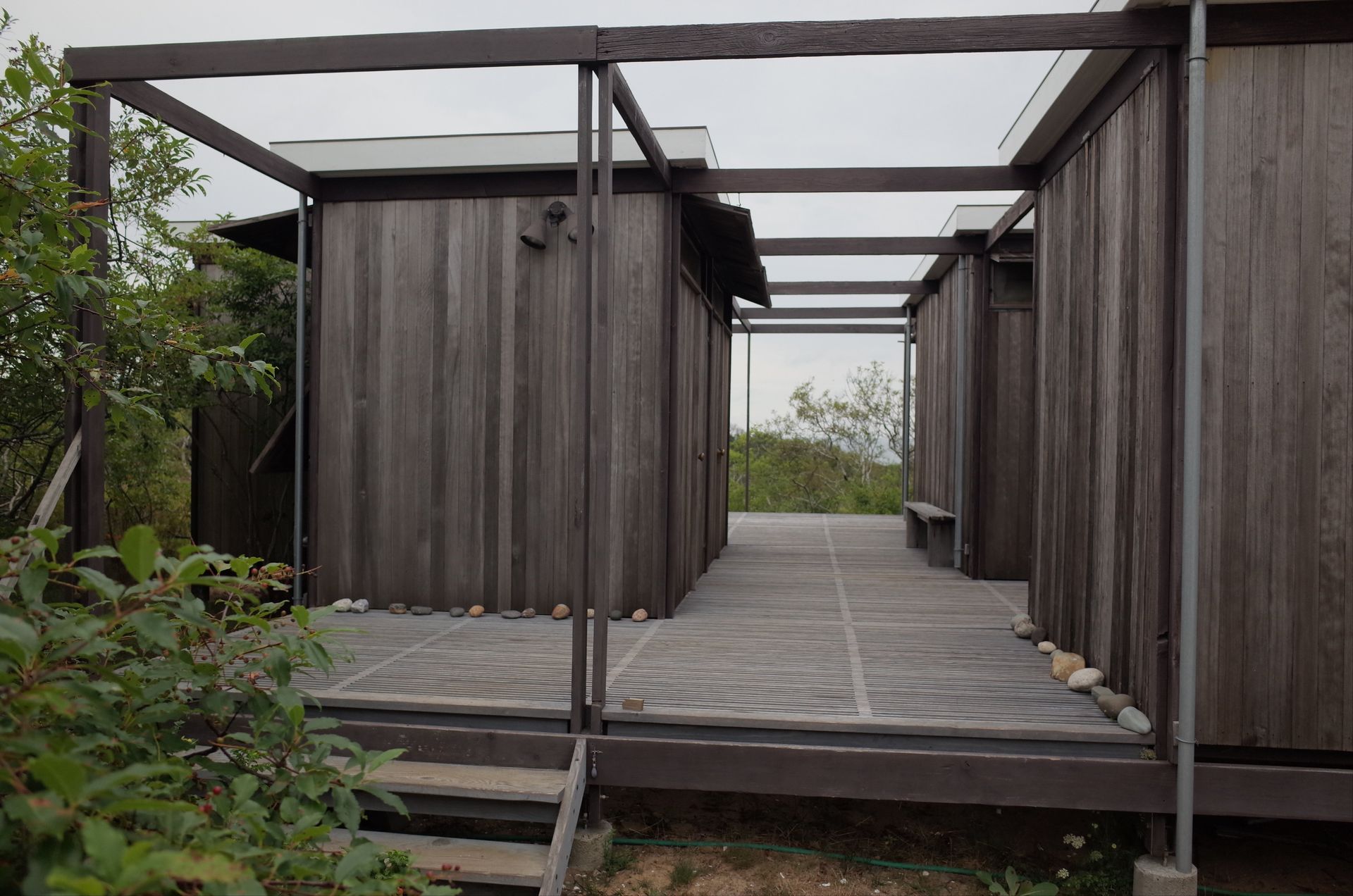
On our annual vacation at the tip of Cape Cod, we lucked out with timing to be able to go on a tour of 3 modernist houses in Wellfleet. Wellfleet became a hub for artists and creative types in the late 1930’s- land in the mosquito infested woods was cheap, and people started experimenting with building simple modern summer houses by the ponds. Most were built without architects, owners and tradespeople collaborated in developing ideas that reflected the modernist trends that were just starting to come over from the Europe. They were mostly built inexpensively. Curtains close off closets, kitchens are inexpensively built with open shelving- no luxury cabinets or granite here. Everything has an ad hoc feel, but what was achieved were homes that truly expressed a new modern idea of what a house could be, and felt appropriate to the rustic natural setting.
Many of these homes now sit within the Cape Cod National Seashore, created in 1961, and were designated for demolition and/ or neglect by the Park Service after a 25 year least back to the original property owners had expired. Thanks to the work of some local preservationists, the Cape Cod Modern House Trust acquired long term leases on three homes within the park area. They have been restored and are now rented out on a weekly basis.
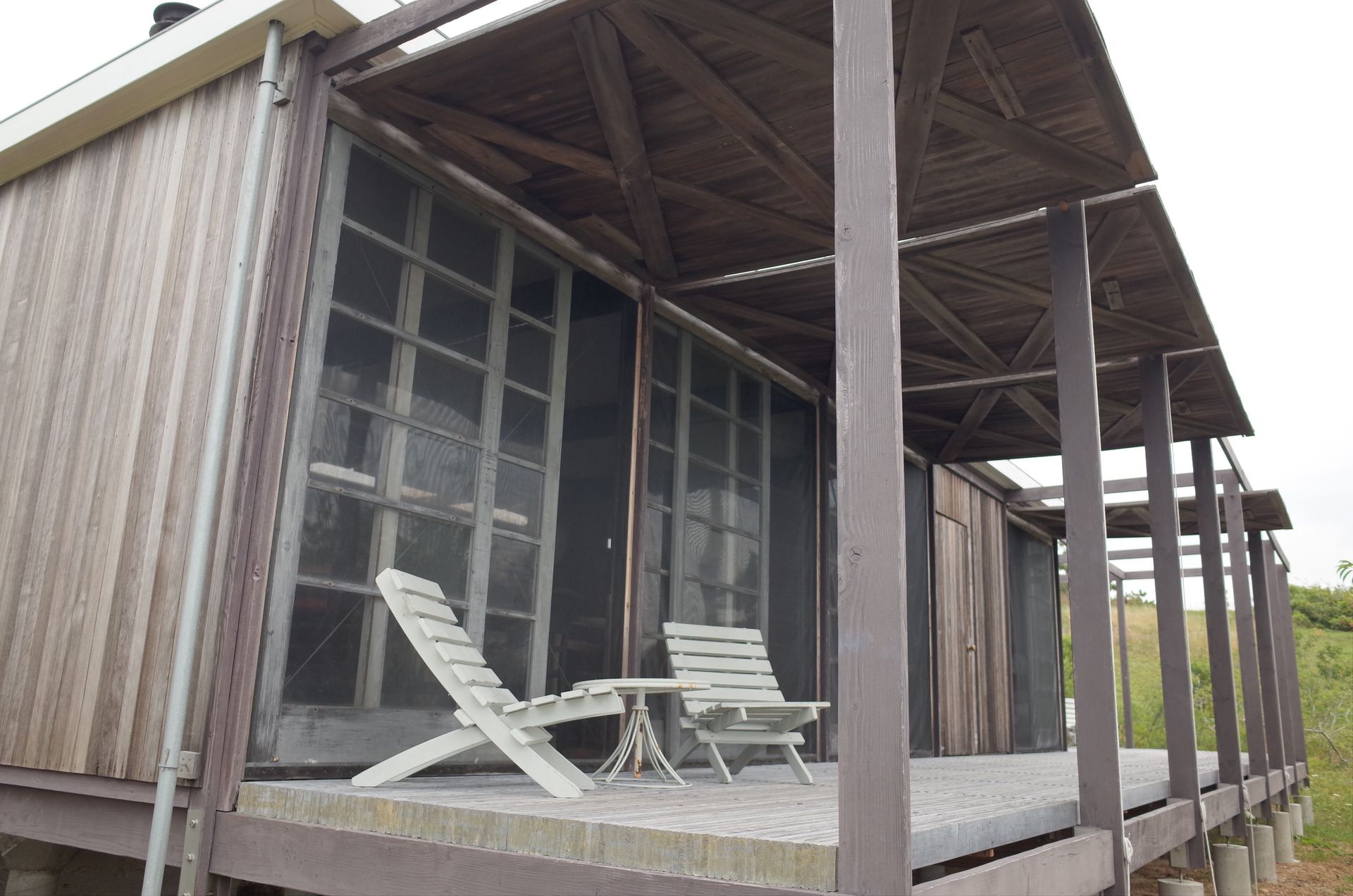
The Hatch House was the most interesting of the three in terms of it’s bold vision and execution. The living spaces are in separate pavilions connected by a slatted deck that wraps around and between the structures. You have to go outside to go to a bedroom or bathroom, insuring constant engagement with the elements. The house feels expansive in a way that masks the tiny rooms, with its commanding view of the bay and the outdoor spaces between rooms.
The large panels that fold down to close up the house were very reminiscent of the Paul Rudolph designed house in Sarasota that I wrote about in a previous blog.
